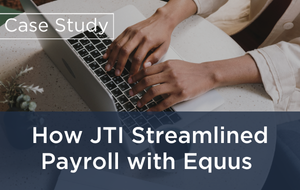Timeline
Transcript
Welcome to Global Mobility Unplugged, a podcast brought to you by Equus Software! Join us as we speak to industry innovators to uncover new perspectives and unique approaches for the challenges facing global mobility teams today. Your host for this season is Lottie McCarthy, Product Marketing Manager at Equus.
On today’s episode, Lottie is joined by Morgan Crosby and Tom Richardson to discuss how volatility between foreign exchange rates and inflationary pressures can affect an employee’s spending power in a new location. Morgan is the Chief Strategy Officer at AIRINC and Tom is the Director of Solutions at Equus. Leading the conversation today, Tom identifies cost of living allowance as an important topic, and one which AIRINC have been speaking regularly about.
To begin, Morgan defines cost of living allowance as the difference in the cost of a market basket of goods and services in the assignment location compared to the home location. With the rise of inflation and exchange rate changes, COLA can see enormous and unexpected swings. The worst thing an employee could do is implement a new COLA without analyzing the things which may have changed. AIRINC, for example, produces a COLA change report to every COLA they release specific to individuals. Then, Morgan expands on the idea that information is power.
One of the best things a company can do is ensure they have a frequent update cycle for cost of living allowances. Morgan’s favorite cycle is quarterly, so that the employee doesn’t have to ask when an update might occur. She is seeing organizations being more on top of making sure that exchange rates and inflationary protection schemes are in good working order. AIRINC has observed a move towards cash-based allowances, partially because they are easier to administer. Lower income earners, Morgan adds, usually spend more money on necessity items than discretionary items. When inflation puts pressure on necessities, often these people are left without enough money to make ends meet. Inflation data can help isolate salary spending to cover employees’ needs. In the near future, Morgan predicts, this kind of information will become more and more available. Finally, she identifies cost of living changes in the last few years.
Podcast Host







